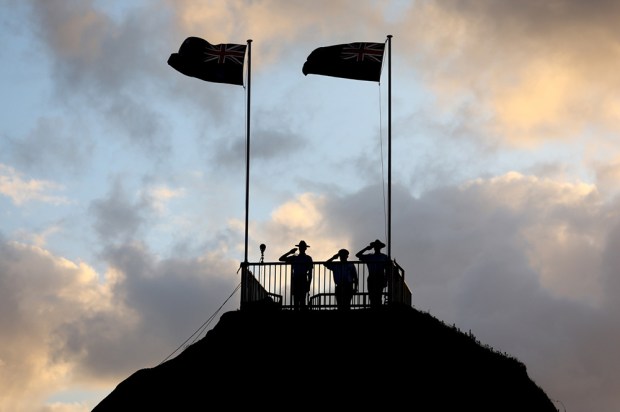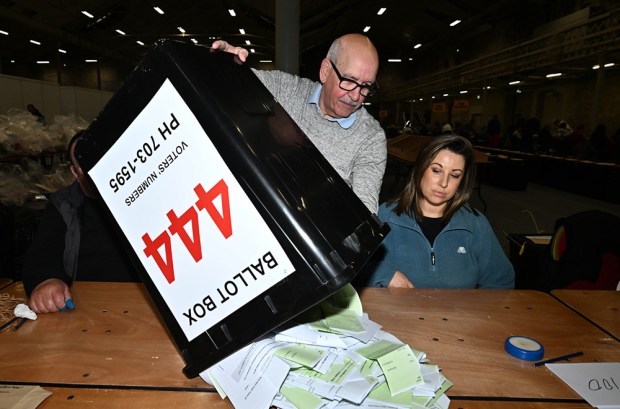Lighting candles, signing condolence books, leaving floral tributes and cards – these things have become de rigueur after the all too frequent Islamic (and occasionally other) terrorist attacks of the past few years. But this time last year saw demonstrations specifically in support of free speech. Marches and marchers around the world proclaimed ‘Je suis Charlie’. On the face of it they seemed to be standing in solidarity with Charlie Hebdo, the wantonly offensive French left-wing satirical magazine, and perhaps in some ways they were. In any case, ‘Je suis Charlie’ was a once-in-a-generation event.
I can’t remember where I first heard of Charlie Hebdo. Maybe I’d seen it for sale in a Parisian newsstand. Or more likely, I’d read about the earlier attacks on the magazine’s offices (which were firebombed in 2011 after a special edition entitled ‘Charia [sharia] Hebdo’ was said to be ‘guest edited by the prophet Mohammad’), and its brave and principled resolve to keep publishing – among its pantheon of cartoons designed to offend adherents of all major religions – drawings of Mohammad. Brave, I thought, but hardly clever in terms of personal security, or in terms of editorial wit.
Charlie Hebdo’s trademark was not the sort of brilliant editorial comment that readers would expect from Bill Leak of the Australian, or Alan Moir at Fairfax. It is nothing like the observational, Seinfeldian cartoons for which this magazine is famous. Rather, Charlie Hebdo’s stock-in-trade has always been crass, amateurish, juvenile drawings, with no subtlety, no wit, and usually no connection to the issues of the day or even the discussion within its pages. It hates all religions but with frequent paedophile scandals the Catholic Church has been low-hanging fruit for its cartoonists, as have innocuous orthodox Jews whose hair and hats can be rather obviously represented, and Muslims, especially of the terrorist variety.
Unfortunately, the Muslim with a bomb or an AK-47 isn’t just an editorial trope of right-wing newspapers; it’s long been a reality for left-wing magazines too. While Islamic caricatures – and the occasionally violent reactions to them – got the most publicity, the most frequent target was Christians, with the pope or a bishop usually being portrayed in one or other act of sexual contortion, often entangled in a condom, sometimes being sodomised with a monstrance. I take no issue with those wanting to publish or buy such things, and if the proprietors can turn a profit, good luck to them! But when I too declared ‘Je suis Charlie’ it was because of my belief in free speech, a belief Charlie Hebdo very obviously shared.
In being Charlie, I was not spruiking for the magazine but, perhaps ironically as a Christian, for its absolute and inalienable right to publish, criticise, parody, and mock all ideas and actions – even religious ones. Since the January 2015 attack, I have written three times for the Spectator Australia on free speech and Charlie Hebdo, the last time (in July) wondering ‘Qui est Charlie maintenant?’ Who is Charlie now? A few days later my question was answered: almost no one and certainly not Charlie Hebdo. Now the ‘almost no one’ part of the answer I already knew; it’s what I proposed in my article. But the following week’s announcement that the magazine had retired from drawing Mohammad – I never saw that coming!
‘We have done our job. We have defended the right to caricature. We have drawn Mohammad to defend the principle that one can draw whatever they want,’ editor Laurent Sourisseau said. This no doubt pleased the magazine’s OH & S insurers, but it also pleased – and vindicated – the terrorists. It is indeed true that Charlie Hebdo defended ‘the principle that one can draw whatever they want’ – that’s what it means to be Charlie – but then it stopped. And the fight for rights –whatever rights they may be – doesn’t allow for hiatuses or for the notion of having ‘done our job’ in the perfect tense. Fickle readers don’t either; the 280,000 paid weekly readers (up from only 30,000 a year ago) are in it for a good time, not necessarily a long time.
But who am I to tell a man who now receives around twenty death threats a month what he should publish? Sourisseau now travels with four police bodyguards (four more than Speccie editor Rowan Dean), so it’s fair enough that he makes the decision rather than me! But the cover to commemorate the first anniversary of the 2015 attack is an inept decision – although an unsurprising one in light of the magazine’s July announcement – and one which proves Charlie Hebdo is no longer Charlie.
‘One year later’, the headline reads, ‘l’assassin court toujours’. The murderer is still at large. And the picture? Mohammad with a bomb in his turban would be clichéd but appropriate. Some of his Kalashnikov-bearing followers at a rock concern or a crowded Parisian café would be in poor taste, but perhaps understandable. But the 7 January edition features neither. According to Charlie Hebdo, the fugitive murderer is actually a generic deity of denominational ambiguity, albeit with a decidedly Sistine Chapel Ceiling look to his beard, and the angry eyes of a mad fundamentalist.
I understand that atheism is essentially a qualification for employment at Charlie Hebdo, and I take no offence at them laughing at religion. Je suis Charlie, remember. A cardinal with a prostitute at the Moulin Rouge? Hahaha! An orthodox Jew getting his curls caught in an escalator? Champagne comedy! I would even stand up for the right to mock protestants – although with so few left in France, it mightn’t be quite as funny (and good luck drawing the St Bartholomew’s Day Massacre and expecting anyone under 30 to know what you’re on about).
But on the first anniversary of the attack on Charlie Hebdo, it is a mistake to focus on mitres and yarmulkes rather than turbans and burqas. Part of the essence of Charlie (if I can put it so pompously) is that ideas matter; that is what the millions marched for. When it comes to cartoons, sexually deviant priests and ridiculously attired rabbis may be hilarious and provocative, but an Imam in an explosive vest should start an important conversation. The new politically correct Charlie Hebdo is no longer Charlie, it shuts down serious conversations, and I expect it too will shut down soon enough.
Got something to add? Join the discussion and comment below.
Get 10 issues for just $10
Subscribe to The Spectator Australia today for the next 10 magazine issues, plus full online access, for just $10.
Chris Ashton is a regular contributor
You might disagree with half of it, but you’ll enjoy reading all of it. Try your first month for free, then just $2 a week for the remainder of your first year.












Comments
Don't miss out
Join the conversation with other Spectator Australia readers. Subscribe to leave a comment.
SUBSCRIBEAlready a subscriber? Log in